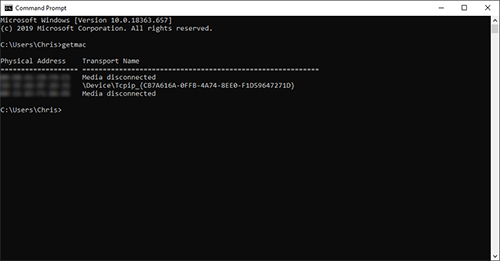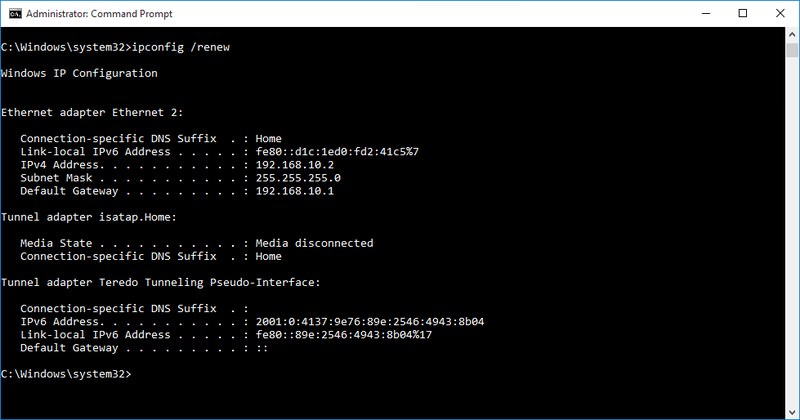
interval: Re-display the selected statistics, pausing after a specific "interval" (in seconds) between each display.By default, statistics on TCP, UDP and IP are displayed, the -p option can be used to specify a subset. -r Displays the contents of the routing table.Used with the -s option to display per-protocol statistics, proto may be TCP, UDP or IP. -p proto Shows connections for the protocol specified by proto, proto may be TCP or UDP.-n Displays addresses and port numbers in numerical form.
 -a Displays all connections and listening ports (server-side connections are normally inhibited). NETSTAT: Displays the status of the TCP/IP stack on the local machine NETSTAT /registerdns: Refreshes all DHCP leases and re-registers DNS names. The DNS Client service uses this information to quickly resolve frequently queried names, before querying the configured DNS servers. /displaydns: Displays the DNS client resolver cache, which includes entries preloaded from the local host file and any recently obtained records for name queries resolved by the host computer. This option is useful to exclude negative entries and all other entries added dynamically to the cache. /flushdns: Empty and reset the DNS client resolver cache. This parameter disables TCP/IP for network cards configured to automatically obtain an IP address. /release : Sends a DHCPRELEASE message to the DHCP server to release the current DHCP configuration and cancel the IP address configuration for all adapters (if adapter is not specified) or a specific adapter indicated by the parameter. /renew : Renews DHCP configuration for all adapters (if adapter is not specified) or a specific adapter indicated by the parameter. /all: Displays all network configuration, including DNS, WINS, DHCP servers, etc. This command, when executed with no options, displays the current IP address, the subnet mask and default gateway (network interfaces of the local machine) IPCONFIG: Displays or refresh the TCP/IP configuration ipconfig /all ] ] /flushdns /displaydns /registerdns This command is useful if the ping command does return any data, to determine at what level the connection failed.
-a Displays all connections and listening ports (server-side connections are normally inhibited). NETSTAT: Displays the status of the TCP/IP stack on the local machine NETSTAT /registerdns: Refreshes all DHCP leases and re-registers DNS names. The DNS Client service uses this information to quickly resolve frequently queried names, before querying the configured DNS servers. /displaydns: Displays the DNS client resolver cache, which includes entries preloaded from the local host file and any recently obtained records for name queries resolved by the host computer. This option is useful to exclude negative entries and all other entries added dynamically to the cache. /flushdns: Empty and reset the DNS client resolver cache. This parameter disables TCP/IP for network cards configured to automatically obtain an IP address. /release : Sends a DHCPRELEASE message to the DHCP server to release the current DHCP configuration and cancel the IP address configuration for all adapters (if adapter is not specified) or a specific adapter indicated by the parameter. /renew : Renews DHCP configuration for all adapters (if adapter is not specified) or a specific adapter indicated by the parameter. /all: Displays all network configuration, including DNS, WINS, DHCP servers, etc. This command, when executed with no options, displays the current IP address, the subnet mask and default gateway (network interfaces of the local machine) IPCONFIG: Displays or refresh the TCP/IP configuration ipconfig /all ] ] /flushdns /displaydns /registerdns This command is useful if the ping command does return any data, to determine at what level the connection failed. 
TRACERT: Displays all intermediate IP addresses through which a packet passes through, between the local machine and the specified IP address. This command is also useful to generate network load by specifying the size of the packet with the -l option and the packet size in bytes. If you specify the -t option you can always get statistics without interrupting pings by pressing Ctrl + Break The -t option to ping continuously until Ctrl-C is pressed. PING: Test the network connection with a remote IP address ping-t






 0 kommentar(er)
0 kommentar(er)
